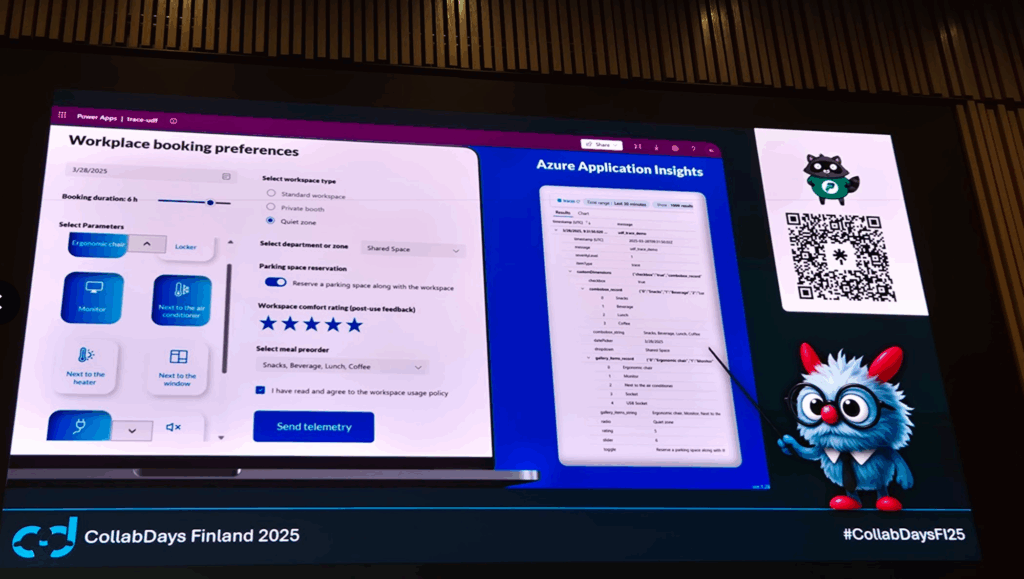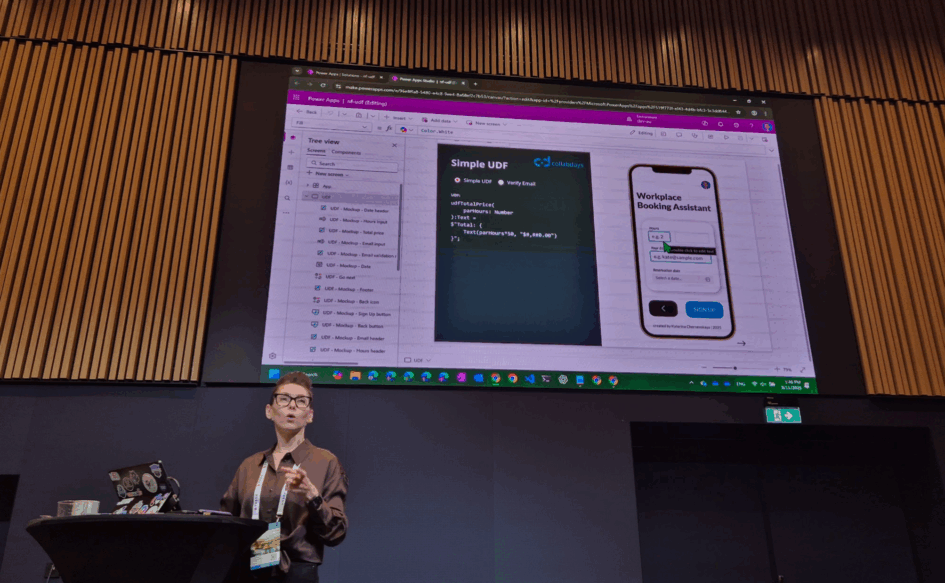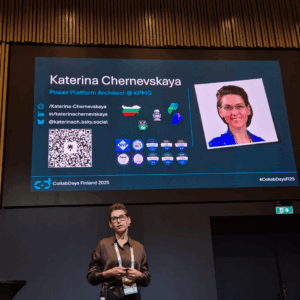At CollabDays Finland 2025, Power Platform advocate Katerina Chernevskaya delivered a session that was both technically rich and refreshingly relatable. Her talk focused on two powerful features in Power Apps—Named Formulas and User Defined Functions (UDFs)—and how they can transform the way makers build, maintain, and scale applications (examples and slides).
🧩 Why Named Formulas and UDFs Matter
Katerina began by sharing a personal story: a puzzle game she tried to recreate in Power Apps. What started as a fun side project quickly turned into a complex challenge with over 6,000 lines of code—just for one screen. The culprit? Repetitive logic and lack of modularity.
This experience led her to embrace User Defined Functions, which allowed her to encapsulate logic, reuse it across screens, and drastically reduce the codebase. The result? A cleaner, more maintainable app—and a better experience for both users and developers.
🔧 What Are User Defined Functions?
UDFs in Power Apps let you define custom logic that can be reused across your app. You specify:
- A unique name
- Parameters (e.g., numbers, text, booleans)
- An output type
- A formula expression
Katerina demonstrated how UDFs can be used for:
- Calculating booking costs dynamically
- Validating email formats using regular expressions
- Controlling visibility and behavior based on user input
- Sending telemetry data to Azure Application Insights
She also explained how to handle behavior functions (like Trace) inside UDFs by wrapping them in curly braces—a crucial tip for anyone integrating external services.
🎨 What Are Named Formulas?
Named Formulas are simpler than UDFs. They don’t take parameters, but they act as immutable expressions that update automatically when the underlying data changes.
Katerina showed how Named Formulas can be used for:
- Theming: Dynamically applying brand colors across the app
- Role-based visibility: Showing or hiding UI elements based on user roles
- Navigation maps: Centralizing screen logic for different user types (e.g., Admin, Designer, Manager)
By storing navigation logic in a Named Formula table, she eliminated the need for nested If statements and hardcoded screen names—making the app easier to read, maintain, and extend.
🧠 Best Practices Shared
Throughout the session, Katerina emphasized key development principles:
- Modularity: Break logic into reusable blocks
- Maintainability: Reduce duplication and improve readability
- Performance: Avoid unnecessary calculations and loading delays
- Governance: Align coding conventions across teams
- Documentation: Make it easy for others to understand and extend your work
She also highlighted the importance of training and onboarding, especially for citizen developers or career switchers who may not have a coding background.
“Named Formulas and UDFs are not magic—they’re tools. But they only work if your team knows how to use them.”

Katerina’s session was a masterclass in building smarter, cleaner, and more scalable Power Apps. With Named Formulas and User Defined Functions now generally available, there’s no reason not to start refactoring your apps today.
Whether you’re building enterprise-grade solutions or experimenting with side projects, these features can help you write less code, reduce errors, and deliver better user experiences.
“Modularity is the foundation of good programming—and now it’s finally part of Power Apps.”

